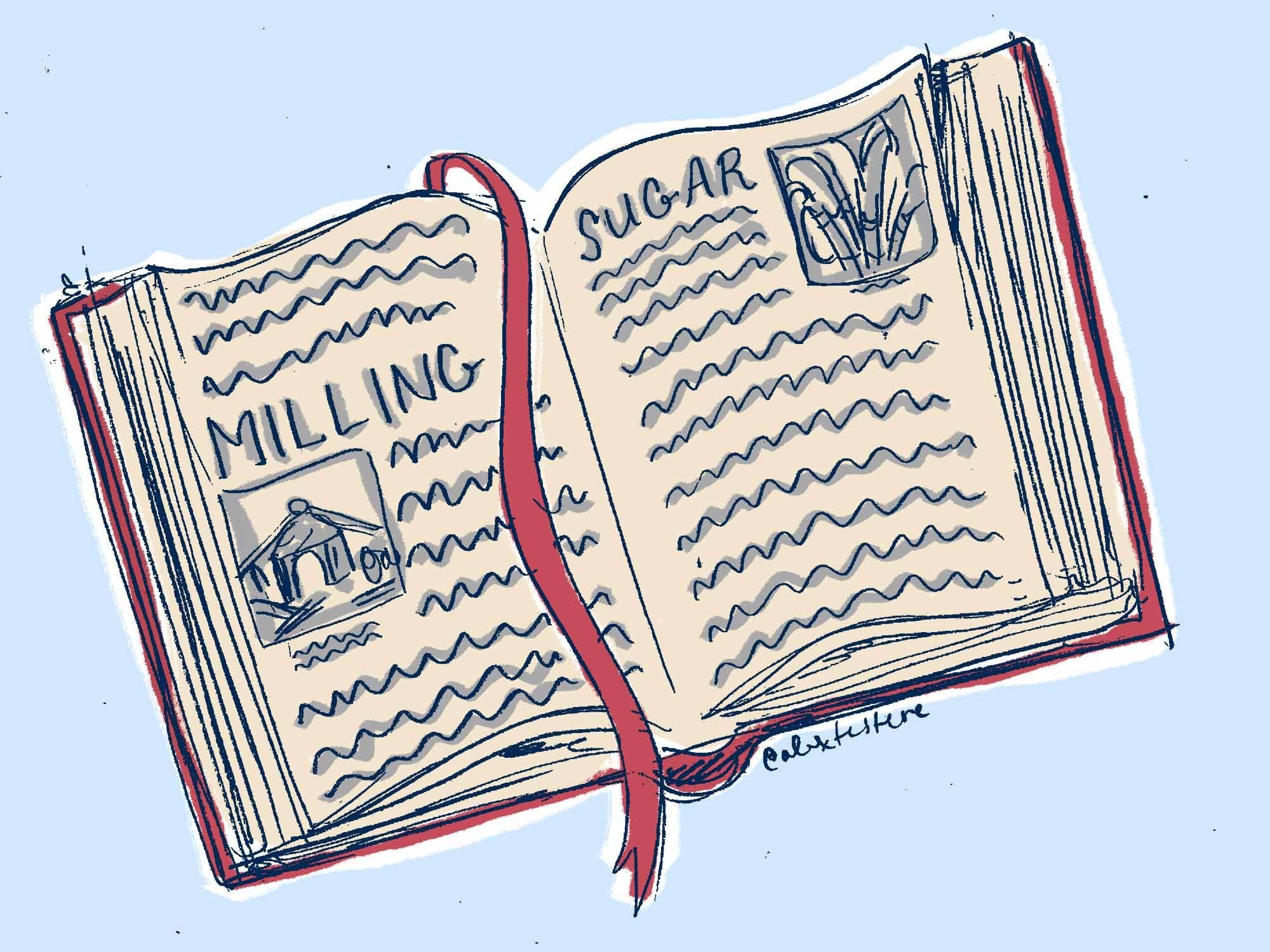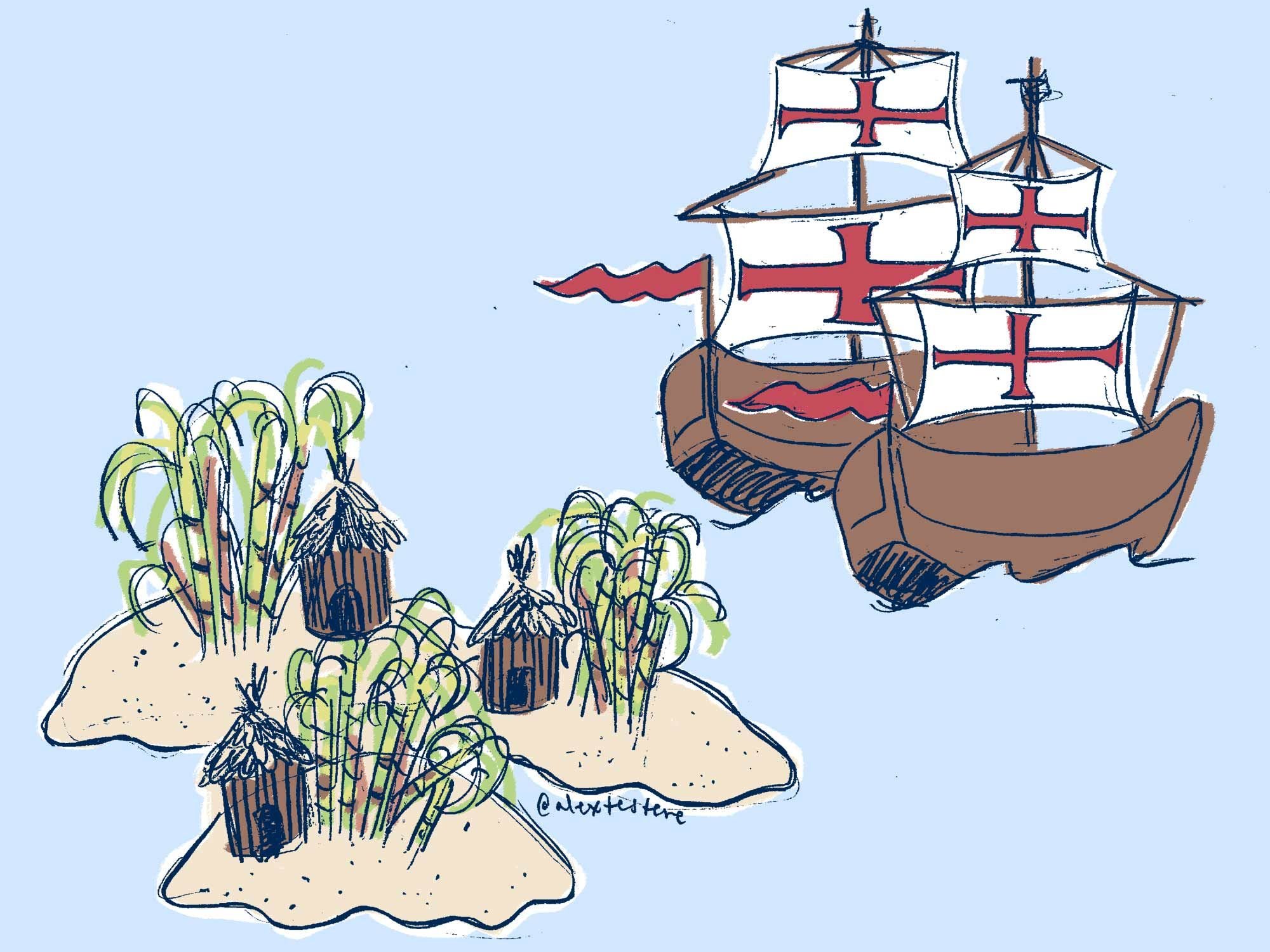
Do you drink your coffee or tea with sugar? Wouldn’t a sweet, sweet baklava like this go well after dinner? Sugar is indispensable in every aspect of our lives, especially in our kitchens. Only for our kitchens? Of course not. Sugar also has an important place on the dusty shelves of history. Especially if you want to understand western history, you first need to understand sugar. Because sugar is not just something sweet, for centuries it was a medicine, a spice, a symbol of royalty and a tool of disease, addiction and oppression. What is the history of sugar? From India to Hawaii, here is the story of how sugar has shaped our world:
Before Christ

10,000 BC: The history of sugar began with honey. Before sugar ruled the world, honey was queen. Basically, in any part of Europe, Africa or Asia that was not covered by ice, there were bees and therefore honey. There were no bees in America, so their sweeteners were syrups from trees, agave nectar from cacti or fruit purees. Humans eventually domesticated bees. However, instead of feeling lucky to encounter honey, people began to keep hives nearby.
The Birth of Sugar

8,000: Sugar was originally native to New Guinea. In the beginning, people chewed reeds to enjoy the sweetness. 2000 years later, sugar cane arrived by ship in the Philippines and India. Sugar was first refined in India. The first description of a sugar mill was found in an Indian text from 100 AD.
400-350: Recipes began to include sugar in Patanjali’s Mahabhashya. Rice pudding with milk, sweet barley flour and fermented drinks with ginger also contained sugar.
327: The Greeks and Romans learned about sugar during visits to India. The Alexandrian general Nearchus writes of sugar: “A reed that brings honey without the help of bees, from which an intoxicating drink is made, although the plant does not bear fruit.” Small quantities were brought back to the Mediterranean and sold to doctors for medicinal purposes.
Sugar University

500-600 BC: Jundi Shapur, a university in Iran, became a meeting place for world scientists. Greek, Christian, Jewish and Persian scholars came together to create the first teaching hospital. They were reading texts from various cultures and writing about sugar, a powerful ingredient in Indian medicine until 600 AD. They also developed better methods for converting sugar cane into crystallized sugar. These methods were important developments in the history of sugar.
Arab Expansion

650: The Arabs were masters of cultivation, refinement and cooking with sugar. They began to conceptualize sugar not only as a medicine or a spice, but also as royalty and a rare delicacy for the wealthiest. Today, they still combine sugar and almonds to make marzipan, their most popular dessert. Candy sculptures have become regular parts of luxury dinner parties.
When Muslim armies conquered Egypt, Persia, India and the Mediterranean, they brought their knowledge of sugar with them. Many European doctors learned about the medicinal uses of sugar from Arabic texts. Under Arab rule, the Egyptians dominated the refining process and made the purest, whitest sugar.
Crusades

1099: Europeans conquering Jerusalem learn the details of sugar production, which was a profitable business in the city at the time. When soldiers return home, they bring candy with them, creating widespread demand across Europe. Venice was already trading with the Muslim world before the Crusades. This allowed them to dominate the sugar trade for almost half a century. But the sweetener was so rare and expensive that it was only available to the rich until the 1300s.
Sugar Takes Over the Western Hemisphere

1402-1500: The history of sugar also experiences an important break here. The Spanish colonize the Canary Islands, establish sugar plantations and enslave the indigenous people to work the mills. Exports back to Spain last until 1500, but the sugar industry is depleted as the islands become mostly deforested. In 1493, Columbus brings sugar cane from the Canary Islands to Hispañola (Haiti and the Dominican Republic). In 1516, Hispañiola becomes the most important sugar producer in the New World.
Ottoman Empire Pushed Sugar to the West
Mediterranean sugar production faced many challenges: a dwindling labor pool, a climate not ideal for growing cane, depleted soil and deforestation. It was easier to import sugar than to grow and produce it. When the Ottomans conquered Constantinople in 1453, they took control of and disrupted important trade routes in the Middle East, North Africa and Eastern Europe. Looking for ways to outwit the Turks and Arabs, Europeans sailed the seas in search of new lands to grow their own sugar.
1500: Portuguese Pedro Cabral accidentally landed in Brazil and began to establish sugar plantations there. Portuguese growers were making technological advances in sugar production: a new mill design that could be powered by animals, water and even wind, and a new method that allowed them to process sugar on a larger scale. Brazilian sugar production is finally starting to dominate the sector.
By this point, the supposed medicinal properties of sugar had become widely established throughout Europe. In Tabernaemontanus (c.1515-90) it is written: “The beautiful white sugar from Madeira or the Canaries, when it moderately cleanses the blood, strengthens the body and mind, especially in the chest, lungs and throat. But it is bad for hot and conscious people. Because it easily turns into bile, dulls the teeth and makes them rot.” It is used to clean milk, alum and wine. Sugar water with cinnamon, pomegranate and quince juice is good for coughs and fever.
Sugar and Slavery

1583: Unable to keep up with Brazil’s sugar production rate, São Tomé, a Portuguese colony, began exporting slaves to Brazil and other New World islands to work on sugar plantations. It was a profitable business. 16. By the end of the century, Brazil was producing the entire capacity of the New World colonies and the Mediterranean. The Mediterranean sugar industry was collapsing.
1600: At this point coffee, tea and chocolate made their way to Europe. Their arrival greatly increased sugar consumption. Making sugar more popular than alcohol, and increasing demand – at lower prices – meant greater reliance on slavery. Only 17. century, more than half a million African slaves were sent to Brazil and other New World colonies to work on sugar plantations.
1807: Thomas Jefferson signed a bill banning the importation of slaves into the United States. Shortly afterwards, the British House of Lords passed an act for the abolition of the slave trade. But slavery remained a widespread practice. The British West Indies continued to trade slaves until 1834, the French colonies until 1848, Cuba until 1886 and Brazil until 1888.
1817: Ribbon Cane, a fast-maturing sugar cane variety that grows well in the swampy climate of Louisiana, is introduced to the region’s 75 sugar mills. The new production was enough to increase demand for cheap slave labor to grow the American sugar industry. High yields and falling prices in the US and the Caribbean helped make sugar cheap and widely accessible to consumers.
The Rise of Sugar Beet

1747: Another important development for the history of sugar! The Prussian chemist Andrea S. Margraff discovers that sucrose can be derived from beets.
1801: Franz Karl Achard, a student of Margraff, was recognized as the first person to extract sugar from beets on a commercial level.
1815: The beet sugar industry began to develop in Europe with the Napoleonic Wars. But Napoleon became a laughing stock for the promotion of industry. When the wars ended, cheap Caribbean sugar was once again exported to Europe, seriously damaging the sugar beet business.
1837: Vilmorin, a French seed company, began producing sugar beets with a high sucrose content and a structure designed for optimal sugar extraction. While slavery was dying in the Caribbean, European governments were enacting policies to support beet growers. The European beet sugar industry with government support 20. century, it started to expand.
Industrial Age

1864: The world’s largest and most technologically advanced sugar refinery opened in Williamsburg, Long Island. With improvements in manufacturing, American sugar production increases and prices fall.
Sugar Hawaiian Takes Over the Throne
In 1875, the Reciprocity Treaty between Hawaii and the United States authorized the duty-free import of Hawaiian sugar. In 1887, American sugar interests forced the King of Hawaii to agree on a constitution that gave them considerable power in the kingdom. By 1893, after overthrowing the Hawaiian monarchy, the US Congress annexed Hawaii.
1887: Lower prices mean less profit. So in 1887, eight leaders in the American sugar industry formed the American Sugar Trust to reduce production in order to increase prices and profits for all their companies. After buying more companies, they changed their name to The American Sugar Refining Company (ASRC). They closed facilities they deemed inefficient and merged others with facilities they already owned. As a result, they fixed the price of refined sugar.
1900: ASRC created the Domino Sugar brand to market all the sugar they produced under one name. In 1907, the ASRC controlled 97% of all American sugar production.
1906: The C&H sugar company was founded by Claus Spreckles, a German immigrant who ran a beet sugar factory in California (C&H stands for California and Hawaii). Spreckles dominated sugar production in Hawaii until the 1930s, when sugar plantations were converted for other uses. Today, C&H is part of Domino Sugar and no longer operates a sugar factory or mill in Hawaii. Read about the last days of Hawaiian sugar here: https://www.npr.org/sections/thesalt/2016/12/17/505861855/the-final-days-of-hawaiian-sugar
A Sweet Public Threat

1942: The American Medical Association’s Council on Food and Nutrition issued the following statement: “It is in the interest of public health that all practical means be taken to limit the consumption of sugar in any form in which it cannot be combined with substantial proportions of other foods of high nutritive quality.”
1966: Medical experts recommended a reduction in sugar intake, noting new studies linking sugar consumption to diabetes and other diseases. These studies and the rising rates of diabetes and obesity were of interest to sugar substitutes.
1980: The FDA thought that fat was a bigger villain than sugar, triggering the trend for low-fat (but high-sugar) manufactured foods. His diabetes-related health problems continued to increase.
The Age of Artificial Sweeteners

1879: Johns Hopkins, a graduate student, began refining saccharin, a crystalline powder 300 to 500 times sweeter than sugar but without calories. There was no widespread use until World War I, when sugar was subjected to strict rationing; when sugar became available again, saccharin was replaced in diet foods.
1952: Calcium cyclamate began to appear in diet sodas. Studies in the 1960s showed that it was probably carcinogenic and the FDA banned the sweetener in 1970.
1965: Aspartame was invented in 1965 and used in diet sodas in the late 1970s.
1967: High fructose corn syrup came on the scene. This was an important breakthrough in the history of sugar.
1998: Sucralose, known by the brand name Splenda, which is 600 times sweeter than sugar, and US artificial sweeteners were found to supplement or replace sugar in all kinds of food products, but could not be proven.
And We’re Coming Full Circle

2000s: As artificial sweeteners fall out of fashion, old forms of sugar make a big comeback: agave nectar, stevia, dates and of course honey, which is delicious, shelf stable and linked to many health benefits. Nothing beats the classics.













